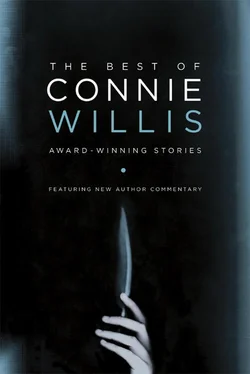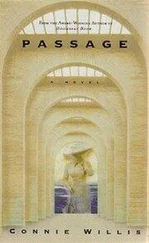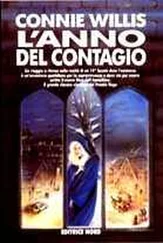I am still frightening myself. If I’d murdered Lissa, I would remember it, and even Athens, notorious for its lack of security, wouldn’t have let me on board a plane with a gun. And you could hardly commit some horrible crime without remembering it, could you?
The people on the ship didn’t remember dying, even when someone told them, but that was because the ship was so much like a real one, the railings and the water and the deck. And because of the bomb. People never remember being blown up. It’s the concussion or something, it knocks the memory out of you. But I would surely have remembered murdering someone. Or being murdered.
I sit on the steps a long time, watching for the splash of Zoe’s flashlight in the doorway. Outside it will be dark, time for the Son et Lumière show at the Pyramids.
It seems darker in here, too. I have to squint to see Anubis and the yellow scales and the deceased, awaiting judgment. The papyrus he is holding is covered with long, bordered columns of hieroglyphics and I hope they are magic spells to protect him and not a list of all the sins he has committed.
I have not murdered another, I think. I have not committed adultery. But there are other sins.
It will be dark soon, and I do not have a flashlight. I stand up. “Zoe!” I call, and go down the stairs and between the pillars. They are carved with animals—cobras and baboons and crocodiles.
“It’s getting dark,” I call, and my voice echoes hollowly among the pillars. “They’ll be wondering what happened to us.”
The last pair of pillars is carved with a bird, its sandstone wings outstretched. A bird of the gods. Or a plane.
“Zoe?” I say, and stoop to go through the low door. “Are you in here?”
Chapter Eight: Special Events
Zoe isn’t in the burial chamber. It is much smaller than the anteroom, and there are no paintings on the rough walls or above the door that leads to the Hall of Judgment. The ceiling is scarcely higher than the door, and I have to hunch down to keep from scraping my head against it.
It is darker in here than in the anteroom, but even in the dimness I can see that Zoe isn’t here. Neither is Tutankhamun’s sarcophagus, carved with The Book of the Dead . There is nothing in the room at all, except for a pile of suitcases in the corner by the door to the Hall of Judgment.
It is our luggage. I recognize my battered Samsonite and the carry-on bags of the Japanese tour group. The flight attendants’ navy blue overnight cases are in front of the pile, strapped like victims to their wheeled carriers.
On top of my suitcase is a book, and I think, It’s the travel guide, even though I know Zoe would never have left it behind, and I hurry over to pick it up.
It is not Egypt Made Easy . It is my Death on the Nile , lying open and facedown the way Lissa left it on the boat, but I pick it up anyway and open it to the last pages, searching for the place where Hercule Poirot explains all the strange things that have been happening, where he solves the mystery.
I cannot find it. I thumb back through the book, looking for the map. There is always a map in Agatha Christie, showing who had what stateroom on the ship, showing the stairways and the doors and the unimpressive rooms leading one into another, but I cannot find that, either. The pages are covered with long unreadable columns of hieroglyphics.
I close the book. “There’s no point in waiting for Zoe,” I say, looking past the luggage at the door to the next room. It is lower than the one I came through, and dark beyond. “She’s obviously gone on to the Hall of Judgment.”
I walk over to the door, holding the book against my chest. There are stone steps leading down. I can see the top one in the dim light from the burial chamber. It is steep and very narrow.
I toy briefly with the idea that it will not be so bad after all, that I am dreading it like the clergyman, and it will turn out to be not judgment but someone I know, a smiling bishop in a white suit, and mercy is not a modern refinement after all.
“I have not murdered another,” I say, and my voice does not echo. “I have not committed adultery.”
I take hold of the doorjamb with one hand so I won’t fall on the stairs. With the other I hold the book against me. “Get back, you evil ones,” I say. “Stay away. I adjure you in the name of Osiris and Poirot. My spells protect me. I know the way.”
I begin my descent.
Afterword for “Death on the Nile”

When people ask me if I like horror, I usually say no, because they mean Elm Street and murderers that refuse to die and impalings and beheadings and disembowelings, accompanied by buckets and buckets of blood.
But it’s not really true that I don’t like horror—I love horror, just not that kind. I love stories where nothing frightening that you can put your finger on is happening, but the hairs on the back of your neck are still standing straight up, stories that don’t have any monsters or internal organs or sharp objects, that have instead a nice, friendly small town and a white dress and a ball of yarn, or an oddly deserted ocean liner crossing the Atlantic during wartime without any running lights, or a woman standing perfectly still, watching you from the other side of the lake.
Or a number you keep seeing—on an apartment door, on a taxi, on an airline flight.
You might recognize that last one. It’s from possibly the scariest Twilight Zone episode I ever saw. The woman on the far side of the lake is of course from Henry James’s The Turn of the Screw . The ball of yarn and the white dress are from Kit Reed’s “The Wait,” and the deserted deck is from Between Two Worlds , the movie the heroine of “Death on the Nile” kept talking about when she was trying to frighten Lissa.
I saw that movie on TV when I was a teenager, and loved it (and not just because it was set in the London Blitz), but I had no idea what it was called or who was in it, so I had no chance of finding it again till I had the bright idea of asking at a science-fiction convention. (Science-fiction fans know everything.)
But even though I hadn’t seen it since I was a kid, it had stuck with me all those years, just as “The Wait” and the Twilight Zone episode have stayed with me, just as the movie The Others and Shirley Jackson’s novel The Haunting of Hill House and Daphne DuMaurier’s short story “Don’t Look Now!” have, in spite of the fact that there’s not a machete or a drop of blood in any of them.
Or maybe because of that. I’ve always thought that slasher-type horror had the same problem as Victorian interior decoration, with all its cushions, knickknacks, whatnot cabinets, and ottomans, and its penchant for putting tassels and fringes and ruffles and lace on everything. They’re both wildly cluttered—one with tea cozies and doilies, the other with severed heads and psychopaths—so crowded that the terror can’t figure out a way to maneuver its way through.
But I also think it’s because the stuff we have in our heads is way scarier than anything H. P. Lovecraft or a WetaWorks special effects team can invent. The movie Alien was absolutely terrifying right up to the moment you saw the monster, and I’ve always thought the best thing that ever happened to Jaws was that they couldn’t get the mechanical sharks to work. They kept sinking and/or exploding when they hit the water, and that’s why they had to resort to the buoys, which were far more frightening, and the shadowy, undefined “something” under the water.
Читать дальше













